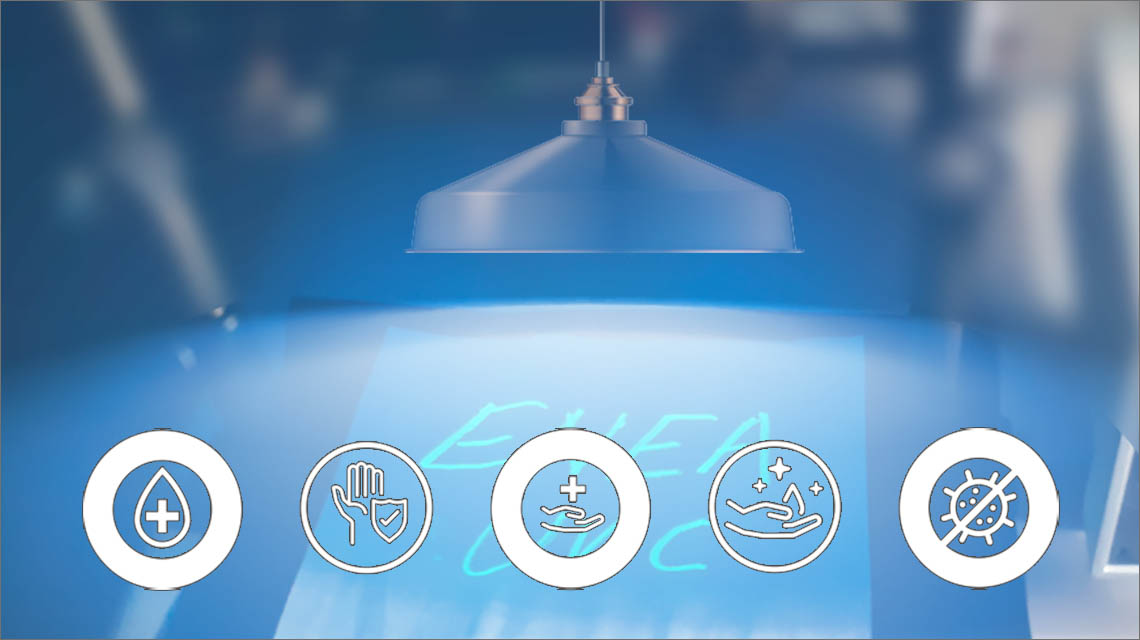Italian National Agency for New Technologies, Energy and Sustainable Economic Development

Energy: New antibacterial and "anticovid" lamps to sanitize environments
ENEA has created the first antibacterial LED lamps which, in addition to illuminating, are able to sanitize against bacteria and viruses - including the virus responsible for Covid (SARS-CoV-2) - schools, offices and public places, but also surfaces , air and water, safely, quickly, sustainably and economically.
The two technologies are called SAVE and UV-CiSANA and are based on LED systems[1] UV-C type[2] not bulky, easy to install and use. The ENEA research centers in Brasimone (Bologna) and Frascati (Rome) have worked on these technologies. Both centers specialize in applied electronic technology and optics, thanks to thirty years of expertise in the study of ultraviolet light sources. Compared to the “sanitizing” lighting systems used for years, especially in hospitals, these sterilizing lamps do not use mercury, which is harmful to the environment, are not bulky and have quick on and off times.
Specifically, SAVE is one ceiling lamp ready for industrialization, equipped with a smart system that combines algorithms and radar technologies for the safe management of personnel. Easy to install and already equipped with virucidal certification. In addition to sanitizing, it allows you to program its operation and signals any unwanted entry of people or animals during operations. In just 45 minutes it is able to sanitize an environment of about 2 square meters from viruses and bacteria, including SARS-CoV-20, in the absence of people or animals.
"With a level of technological maturity 6, the so-called Technology Readiness Level or TRL, our SAVE prototype has been demonstrated in a relevant environment and is ready for industrialization", underlines Mariano Tarantino, head of ENEA's nuclear safety and sustainability division. Research Center of Bologna. "For the future - he adds - we plan to implement its functions with assistance systems for the visually impaired and to extend its application, for example, on public transport or in agriculture, for sanitizing against pathogens, as a contribution to the control of the global pandemic". The SAVE project was funded by the Ministry of University and Research and, in part, by ENEA resources.
For UV-CiSANA, these are innovative UV-C LED lamps to sanitize surfaces, air and water. It is able to eliminate over 99,9% of bacteria and viruses, including SARS-CoV-2, even in a few seconds of irradiation. The UV-C LED lamps are compact, easily transportable, sustainable and with reduced size and on / off times compared to commonly used mercury lamps. The technology is also effective for the real-time sterilization of water with the flow typical of a common tap, as well as for the sanitization of the air in closed rooms (offices, classrooms, shops, etc.).
"The sterilizing capacity of UV-C LEDs, which emit ultraviolet radiation of the C band, has been known for some time: its effectiveness is based on the fact that it is effectively absorbed by the DNA / RNA of pathogens (viruses, bacteria, fungi), breaking their bonds and thus causing their elimination or inactivation ”, explains Sarah Bollanti of the ENEA laboratory of Plasma Applications and Interdisciplinary Experiments. "UV-C LED technology - she adds - is promising and our experience in optics, and in particular in ultraviolet light sources, allows us to design and manufacture devices and following the best practices for different needs. We are also open to new collaborations to evaluate applications in which compactness, portability and speed of use are priorities, such as on trains, airplanes and other means of transport ".
